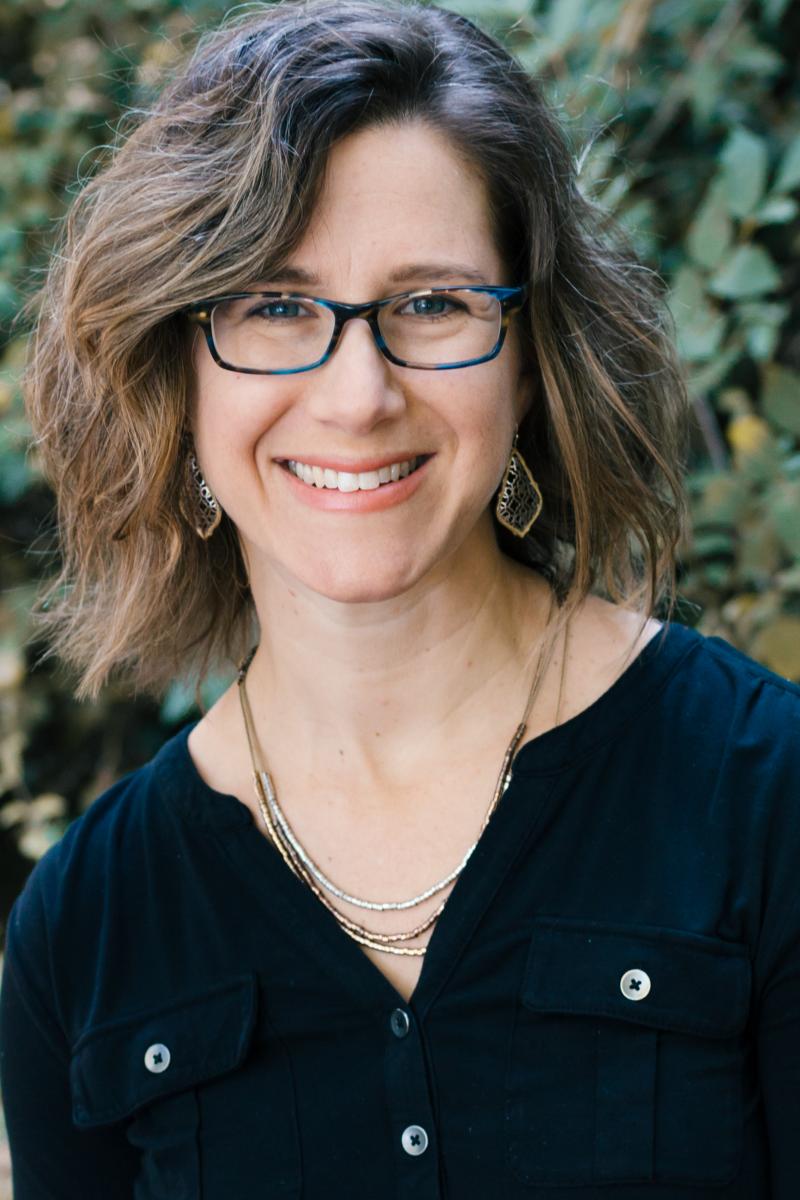 After seven years serving as Director of Lifelong Learning at a large synagogue, Laurie Matzkin launched her own business and built her brand from the ground up. We had the opportunity to speak with Rabbi Matzkin about her transition from synagogue leader to small business owner, how Jewish wisdom and yoga align, and her experience presiding over life cycle ceremonies. Below, she shared her compelling story, along with ways in which the Rabbinical Assembly provided guidance during pivotal career moments.
After seven years serving as Director of Lifelong Learning at a large synagogue, Laurie Matzkin launched her own business and built her brand from the ground up. We had the opportunity to speak with Rabbi Matzkin about her transition from synagogue leader to small business owner, how Jewish wisdom and yoga align, and her experience presiding over life cycle ceremonies. Below, she shared her compelling story, along with ways in which the Rabbinical Assembly provided guidance during pivotal career moments.
You’re the founder of Makom Yoga. Can you tell us about how you came to that career path?
I’ve been interested and engaged in yoga practice since I was working for Hillel, before rabbinical school. I saw first-hand how yoga, guided meditation, and breathing practice served as spiritual, physical, emotional tools for helping students with tough times and the existential crises of undergraduate life. At that point, my main access to yoga was through Rodney Yee DVDs on clunky laptops that we would watch in the basement of the freshman dorm.
In 2010, for my first women’s retreat through Kol Emeth, I was invited to create a shacharit prayer experience that would be a little different. This was my first foray into combining yoga and Jewish ritual. It was more of a yoga prayer experience, a yoga minyan, than what I do now. It was very meaningful to the participants to feel the prayers in their body in a creative way. Over subsequent years, I started building that curriculum into my work with different constituencies in the synagogue. I played with themes from prayer, Torah, and holidays into the yoga practice and started offering it with different groups: Sisterhood women, Hebrew school students, Shabbat morning spiritual seekers, etc.
During my second Yoga Teacher Training (this time focused on pre/post-natal yoga), the format of Makom Yoga revealed itself to me. HaMakom – space, place, presence – is a name, or quality, of God that we can access when we are paying attention to our body, mindful of our breath and reflective of our place in the world. Creating space in the body for God and Torah has become one of my rabbinic passions.
Makom Yoga has unfolded more and more over the past three years and become my brand. I’m now teaching at our JCC and four local synagogues, and regularly serve on faculty to offer classes as part of Jewish retreats. I have taught young children, teens, new parents, and empty nesters, both in the context of Shabbat spiritual practice and as an “add-on” to regular yoga scheduling. Makom Yoga is the only Shabbat morning experience at one synagogue, and at another it is one of four monthly alternating options to the main service.
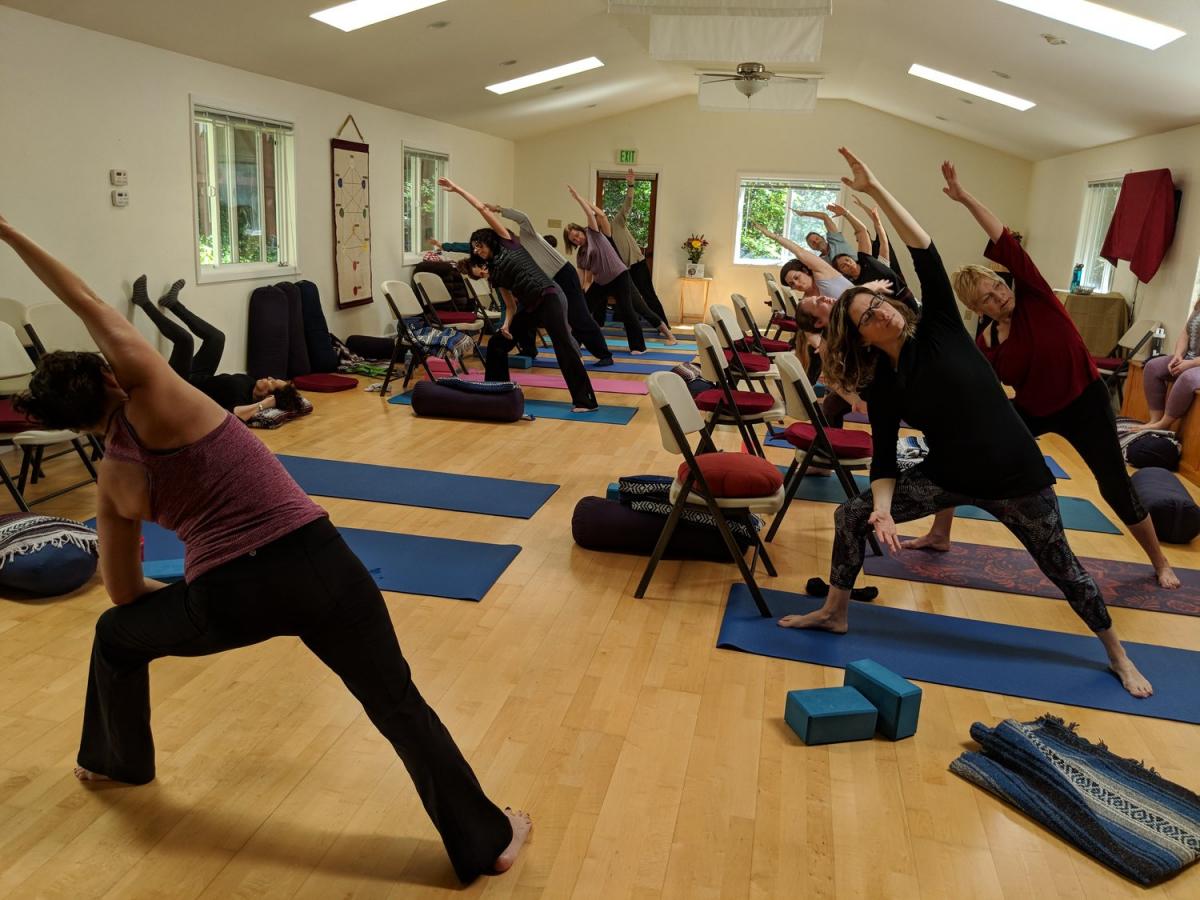
It seems like it’s been a really meaningful career path for you. Can you tell us more about how Jewish wisdom and yoga aligns?
We have a very intellectual and spiritual but cerebral tradition. It’s easy to sit in the Beit Midrash and not think about the body that is housing your brilliant mind. What has become meaningful for me is the spirit of iyyun, a slower, deeper exploration – similar to when we’re doing a chanting practice, and we go deeper and deeper into one verse until we really embody it, until it’s really inside us and showing us a truth about our own experience. That’s the way I try to approach the parasha or text when building a Makom Yoga class.
As I prepare for a teaching, I look for a word or phrase that stands out from the text that has a potential embodied element to it. Perhaps it’s the image of God bringing the Israelites out of Egypt on eagles’ wings, or the scene of Rebecca at the well, which mentions camels 17 times. These are both flash words in yoga practice – eagle pose, camel pose. Eagle pose, for example, is a standing/balancing pose in which you cross your legs and cross your arms in opposite directions, rooting your feet and lifting up through your center, your heart and chest and hands. The mention of the eagle goes by quickly – evocatively, poetically, but quickly - in Parshat Yitro. But in the commentaries from Rashi to Aviva Zornberg, there are stunningly beautiful texts about an eagle fluttering up outside its nest to feed its young, and about how the eagle flies highest in the sky, and that the difference between the eagle and other birds is that the eagle brings its babies onto its wings, rather than holding them in their talons. So the relationship between God and the Jewish people is being described in a totally unique way – God as a fierce yet nurturing parent, willing to support the Israelites with speed and strength, and soaring limitless through the sky. Surely our deeper understanding of this verse adds aspirational meaning to our physical practice of eagle pose.
In the other example of camel pose, you stand on your shins, raise your arms overhead and then reach them back toward your heels while lifting your heart. (Be careful not to collapse your lower back.) You activate your circulatory system and can feel an energetic and physical flow of energy. This open-hearted, joyful quality of finding love in unexpected places and nourishing ourselves in the wells of loving connection perhaps explain why the word camel/gamal comes up 17 times in Toldot. The poetic use of the word camel also resonates here: Ki gamal alai… for I have received more than I deserve, and my heart is open with joy for this loving gift.
You’ve been practicing in the Bay Area, is there any special significance of that area in your work?
I’m a fifth generation San Francisco native. I grew up on the other side of the Bay, and I was away for twelve years, during undergrad in Bloomington, Indiana, working for Hillel in Philadelphia, and rabbinical school at Ziegler in Los Angeles. I was very fortunate to be offered a position in Palo Alto, and enjoyed reconnecting with my extended family – many that live within 15 minutes of the synagogue!
My husband and I met here and we both have very strongly rooted Bay Area families. My husband is a beloved educator at the local community day school, where he has taught for well over 20 years. When I finished my position in 2016, I decided to take a sabbatical from full-time work. It felt right to continue to make our life in the Bay Area, and to be able to stay very close to our extended family network, extend the relationships that I’d built for the last several years and continue touching the community through Makom Yoga and other rabbinic work. I am still amazed when yoga students at various shuls say things to me like, “Did you know I’m in a hiking group with your Uncle Roger?”
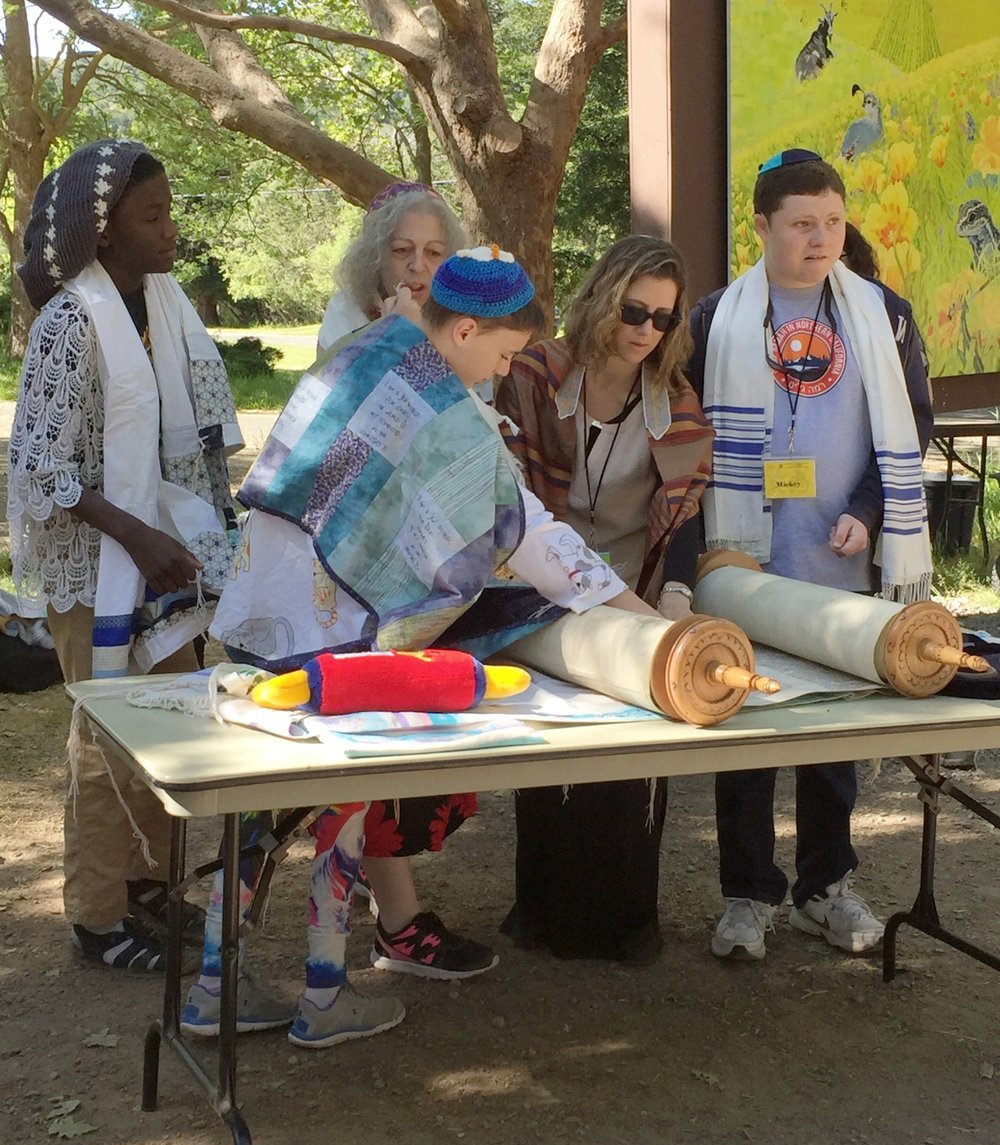
You were the Director of Lifelong Learning for a rather large synagogue. How did that prepare you for your role now and what was the transition like?
It was a large community and a very large job. I had parts of three previous positions combined into one, so I was managing and supporting everything youth-related from tots through teens, as well as leading parents and committees and holiday programs, from logistics and budgeting to vision to lay leaders and hiring teachers, etc. I created several new programs and re-invigorated others. So I was really lucky to have the opportunity to grow my skills in multitasking, be part of a true team, and work on at building relationships with people at every level of the community. I was able to experiment and bring my own artistic and creative background to the school and to all my programming. I founded the Chugim program, in which we brought expert congregants who were professional or semi-professional artisans and craftspeople to lead creative project-based learning with our 3rd-7th grade students. I personally taught the yoga and the band chugim as well because of my background in classical music. That was a great way to experiment as an educator and bring creative ways to enjoy our own life passions through a Jewish lens – perhaps also setting the stage for Makom Yoga.
With this experience, what would you tell rabbis or potential rabbis who don’t know if they want to be pulpit rabbis or work in other ways with the community? What advice would you give them?
My time investing fully in a community was a fantastic starting point in terms of learning and implementing systems, clarifying my rabbinic values, and building my own confidence as a leader. I have two grants from the JCC, but publicity is challenging because they literally have 90 other classes every month. I also manage my own workload in a different way than having a supervisor. I have people who hire me as a contractor, rabbis and educators and other folks who bring me on, but it can be more challenging to get clear feedback that’s helpful for growth. I actually look to several successful network-marketing leaders for help on goal-setting, accountability, and business-building practices. I’ve learned so much from Beachbody and DoTerra, in particular, from creating a virtual community to sharing authentically as a leader.
So the first year I was on sabbatical, the reality was that I was pregnant with our second son, remodeling our house, and working several part-time jobs. The second year away from synagogue life, I was dealing with my son’s autism diagnosis, taking care of a new baby, and working several interesting part-time jobs. And then this past year, I’ve really embraced the concept that I am a community rabbi, I am serving a diverse group of people who are not necessarily getting rabbinic support in other ways.
I’m not preaching to hundreds of people, I’m touching people 1, 2, 5, 10, 15 people at a time. It seems very meaningful to those people to have Jewish and rabbinic points of access like they’ve never had, because they’re just not going to be synagogue people. My next step is to truly embrace the business owner mindset and really be thinking about the brand, the publicity, the marketing, in the name of serving the community, and also in the name of creating sustainability for my work.
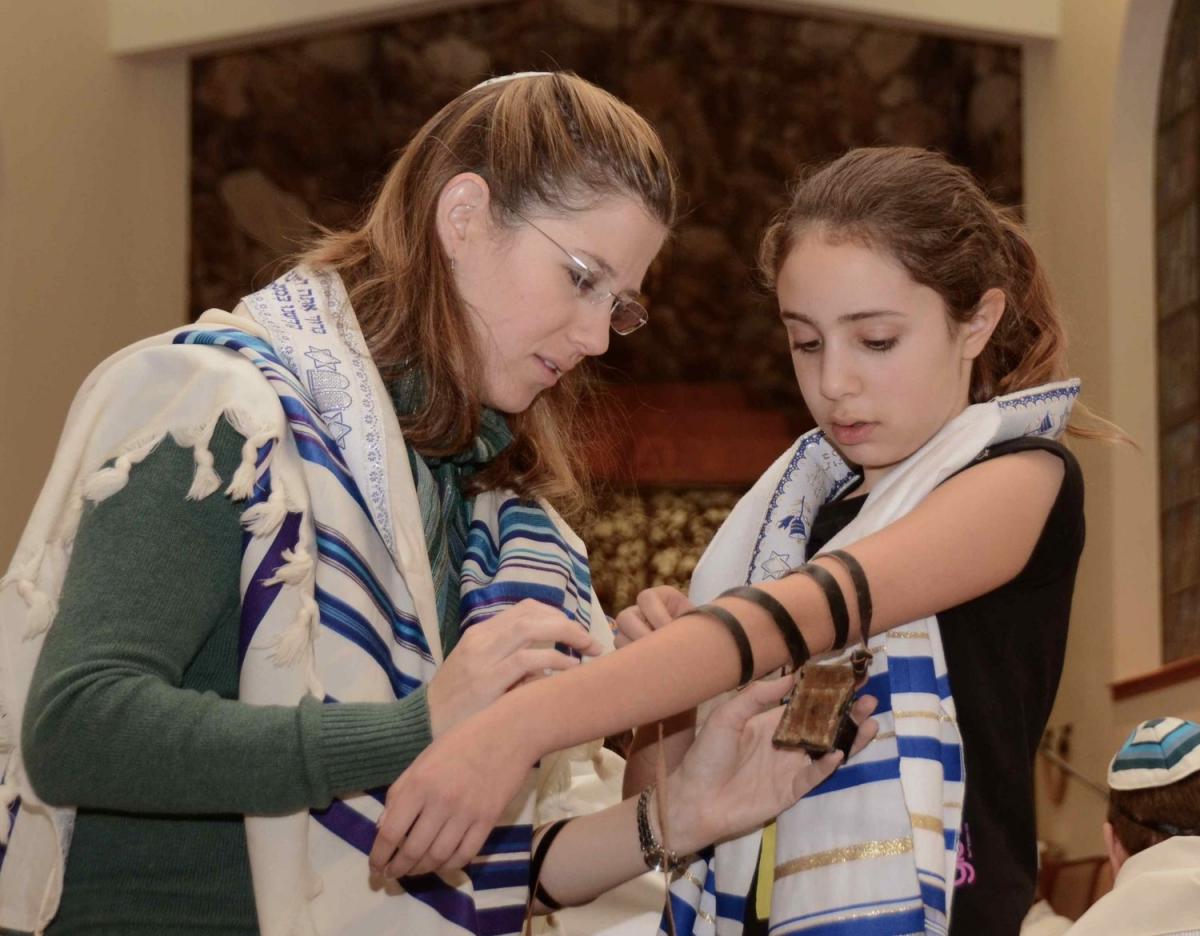 You’ve created ceremonies for various life cycles based on your work. Can you explain what’s involved in those processes?
You’ve created ceremonies for various life cycles based on your work. Can you explain what’s involved in those processes?
I try to think creatively about the traditional options and how to market them in a very accessible way, so that less knowledgeable Jews might still end up comfortable and excited about the traditions. I’ve been doing a lot of second weddings, and often one person is divorced and one person is a widow. And so the couple has different experiences with their previous marriages ending. We look at the value of hachnasat orchim, how do we honor those people in your life, past and present, who have explicitly given their blessing for you to create a life of love. Another situation I’ve often is that often the woman (divorcee) moves into the man’s (widower’s) house. And so there is this issue of not wanting to bulldoze over the first wife’s sensibilities and taste, wanting to honor her and not redo the whole house. So we talk about really getting a nice, artistic ketubah, and getting it framed and placed in a prominent place, creating a sense of ownership of the home and the marriage without undoing the history of the house.
A very different example is around a stillbirth, and the parents’ desire for some sort of ceremony. The emotional goal is to leave the burial experience with some small sense of comfort. So I created what I call a Tekes Shalom, a ceremony of peace. It acknowledges that it is not peaceful right now but we pray to move into a feeling of shalom, of wholeness-within-brokenness for the parents and the mourners, and that over time, the memory may be peaceful. We have planted a tree over the grave, calling upon the image of a Sukkat Shalom, as well as the Honi stories where time stretches out, offering comfort to future visitors. By mindfully listening and offering a range of ritual ingredients, I provide the tools that fit the emotional needs of a particular situation.
It seems like you’re having a really big effect on these people’s lives during really important life stages. I’m wondering, what ways, if any, has the Rabbinical Assembly helped you in your career?
I haven’t had a lot of contact with the Rabbinical Assembly aside from Interview Week, which was obviously a major moment on my career path. I want to appreciate that students get to make the first call and interview wherever they want to. I think that’s very empowering and I want to thank the RA for that decision. I think it’s a really honorable way to walk people into the field in a place of kavod.
A few years ago, I wanted to figure out whether or not my heart was in doing youth High Holiday services or whether I was going to try to seek another holiday position. I spoke with both Rabbi Peretz and Rabbi Schoenberg, who were very kind in listening to me and asking clarifying questions to get clear on were my fears, what were my inner judgements, and my passions. For those seven years in the synagogue, I planned and oversaw approximately 30 events every Tishrei, serving over 300 students per year. I wanted to draw upon my developed skills and strengths but also move beyond that role. I’m pleased to report that after a few years of supporting a local synagogue with Makom Yoga sessions on the holidays, I’ve also been serving as the rabbi at an incredible retirement community/ independent living, and thoroughly enjoyed being their High Holiday rabbi – as well as leading Seder, Shabbat services, and even a 5-session course on the History of Jewish Liturgical Music! It can be scary to break past the known, but the unknown also has riches of rewards.
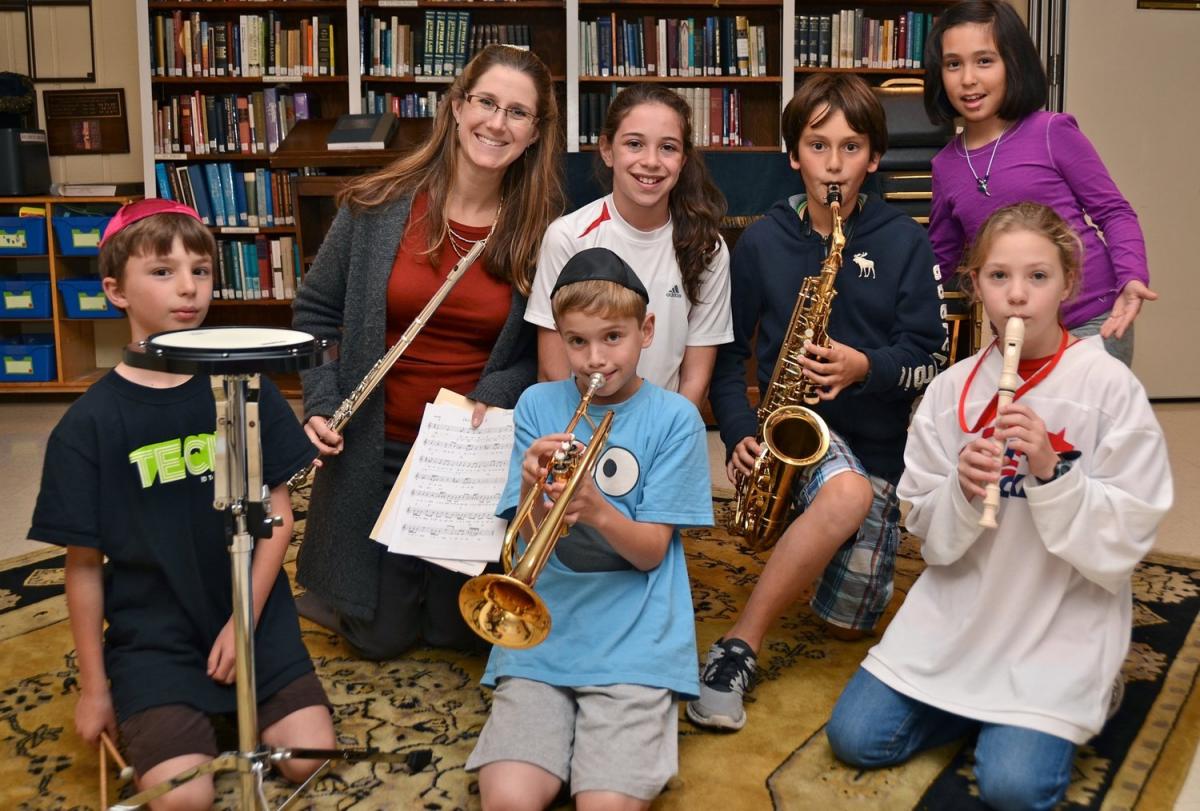
We’re glad that the RA has been useful in those moments. Do you have anything else you would like to tell us about, anything you’re excited about in the future?
I’m grateful for the chance – through grants – to grow my role as the JCC Mindful Jewish Journeys Educator. I think the JCCs are a great place to give our rabbinic support, to give our creativity and learn from their creativity. I’ve also spent the year getting more invested in PJ Library as a family engagement network, and am thrilled to have synced up my J-Fam Jewish baby playgroups with Silicon Valley Jewish Federation and our local PJ Library team. At the PJ Library International Conference (as well as at Rabbi Josh Rabin’s recent USCJ Innovation seminar), I heard the message loud and clear about getting out the door and into secular spaces for creative programming that leads to relationship building. Ask me in a few months about Story Shabbat, launching on Friday mornings out in our community!
I continue to work on not having numbers be the litmus test of success, but the depth of the connection. I know that’s not always what funders are looking for – it’s tempting to measure impact by breadth instead of depth. I think our rabbinic role is to offer as much depth as possible as quickly as possible, with a clear message of the benefit for the people who are engaging. With synagogue membership we have an assumption that people are a little clearer on their benefit, but I’m not even sure if that’s true. But we always coming back to how is this activity, this conversation, this ritual helping their neshamah, how is this growing and expanding their Jewish awareness, how is it enriching their Jewish family life, and then make decisions of where we put our own intellectual, creative and spiritual energy based on those answers.
The RA is looking to highlight the diversity of the rabbinate by featuring RA members across a variety of rabbinic roles in congregations, schools, organizations, and communities. To nominate a colleague, email Diana Denza, our Marketing and Communications Specialist, at ddenza@rabbinicalassembly.org. Please provide your colleague's full name along with a paragraph about why you're nominating them in the body of your email.
